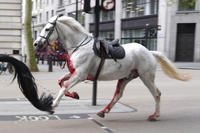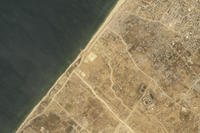NASA was set to hold a news conference at noon Monday, but Big B couldn't wait -- Boeing announced Monday it's setting up an office at Kennedy Space Center, where it hopes to build a new crew capsule for tomorrow's spacefarers. NASA will let Boeing use the space shuttles' old Orbiter Processing Facility-3 to work on its Crew Space Transportation 100 spacecraft -- - that is, if everything goes right.
The company is clearly excited, but get a load of all these caveats in its statement Monday:
"We selected Florida due to the cost benefits achieved with a consolidated operation, the skilled local workforce, and proximity to our NASA customer,” said John Mulholland, vice president and program manager of Commercial Programs for Boeing Space Exploration. “Pending the continued selection of Boeing for future Commercial Crew development and service contracts, and sufficient NASA funding, we project a Commercial Crew program workforce ramping up to 550 local jobs by our scheduled operational date of December 2015. The CST-100 will provide NASA with reliable, safe, and affordable transportation to the International Space Station and other destinations in Low Earth Orbit.”
NASA, Boeing and Florida space industry officials hope that a rising space tide lifts all space boats -- that Boeing, its sub-contractors and other big players not only will help fill the gap left by the space shuttle program, but put humans back into orbit for "less" than it might have cost NASA by itself. Here's what the company said about its capsule's planned capabilities:
The Commercial Crew program consists of developing, manufacturing, testing and evaluating, and demonstrating the CST-100 spacecraft, launch vehicle and mission operations -- all part of Boeing’s Commercial Crew Transportation System (CCTS) -- for NASA’s new Commercial Crew human spaceflight program that will provide flights to the International Space Station. Boeing’s system will also be capable of supporting Bigelow Aerospace’s planned orbital space complex. The program is based on the company’s experience and innovation over the past 50 years of human spaceflight and nearly 100 years of commercial aviation.The CST-100 is a reusable capsule-shaped spacecraft based on proven materials and subsystem technologies that can transport up to seven people, or a combination of people and cargo. Boeing has designed the spacecraft to be compatible with a variety of expendable rockets and selected the United Launch Alliance’s Atlas V launch vehicle for initial CST-100 test flights in 2015.








